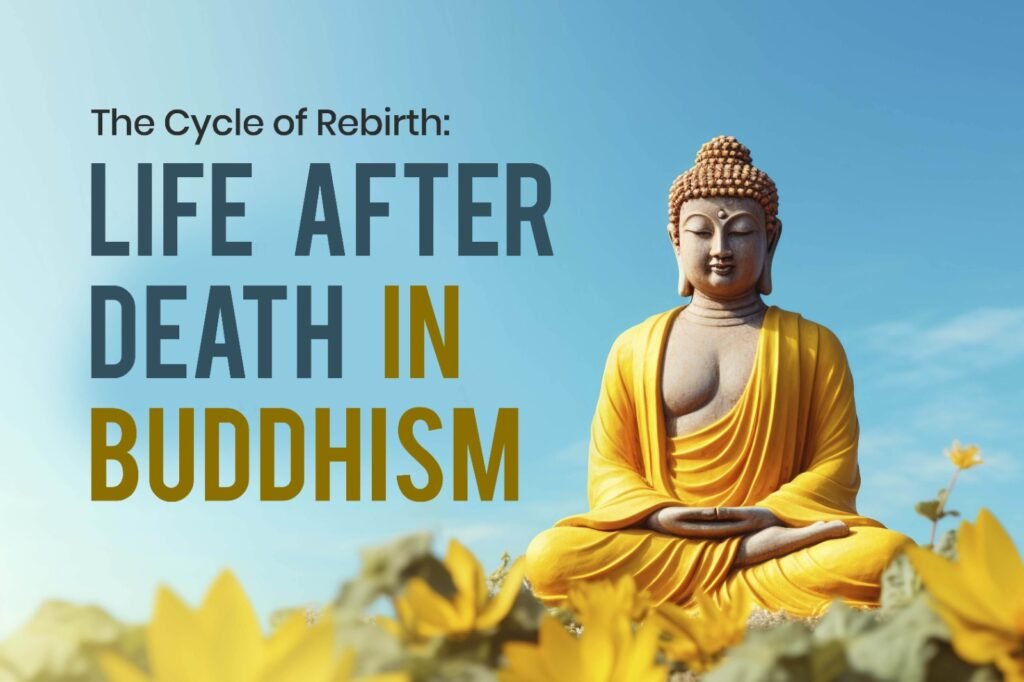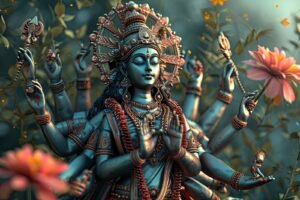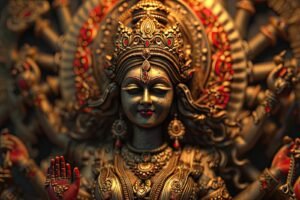Death is an integral part of every living organism. Death is the leveller, and every one, one day, irrespective of every difference, will be conquered in front of death. The universality of death is the understanding that all living organisms die one day.
This inescapable fate shapes human life and contributes to the social and cultural spheres. From a biological perspective, death is the end of the life cycle. It will end all vital functions such as respiration, circulation and brain activity.
When it comes to Buddhism, the concept of death is entirely different. Buddhists believe that concept of life and death in buddhism are interconnected. This continuum is part of a cosmic rhythm. Buddhists believe that everything in the universe goes through this continuum phase and that all individual lives are part of this cycle.
This blog will explore life after death from a Buddhist perspective. According to Buddhism, death is a phase of life; it does not mark the end of life. Buddhism relies on the concept that human beings go through countless births and deaths until they achieve the ultimate goal of their life, which, from the Buddhist perspective, is enlightenment.
The concept of Rebirth and Samsara in Buddhism
Life after death is always a curious subject to human beings. The concept of rebirth and saṃsāra is fundamental aspects of Buddhism. The idea of saṃsāra is the continuous cycle of life, death, and rebirth without beginning or end.
According to Buddhism, human beings move from life to life through Karma. It is activated by the good or bad actions done in this lifetime and the previous lives. A person’s rebirth is based on their last actions, in which good Karma makes that person end up in a good rebirth, and bad Karma leads to lousy rebirth.
Saṃsāra, in other words, we could say it is transmigration, karmic cycle, reincarnation or Punarjanman. Saṃsāra indicates an endless and repetitive cycle of existence. This cycle of existence comprises various forms of life where individuals experience suffering and pleasure, die and are reborn again in a different form.
The surprising part of this cycle is that it will continue until the individual attains enlightenment and goes beyond birth and rebirth. The supreme goal of Buddhist practice is to become free from saṃsāra. The concept of saṃsāra contrasted with nirvana, which is the state of peace and exists beyond suffering, ignorance and rebirth.
Karma in Buddhism means “action” or “doing”. It is a cardinal concept that details how our actions have a role in rebirth in the cycle of saṃsāra. The important thing we consider is the intentions behind our actions because those intentions are the factors that determine the type of rebirth we are going to experience. Karma is not something that God does not decide; the sole authority of Karma is in our hands. It is our actions that determine our life.
Impermanence in Buddhism is a fundamental principle which explains that everything changes and nothing can stand still. Everything that comes into our life eventually undergoes decay no matter what. It includes emotions, feelings, thoughts, body cells and views. Human beings tend to forget about the impermanent nature of the things in our lives. It eventually leads to the suffering.
The Bardo State
Bardo means “gap” or intermediate state, derived from Tibetan. In Tibetan Buddhism, bardo means the transitional phase between death and rebirth. The bardo state came into existence shortly after the demise of Gautama Buddha.
Now, let’s explore the six bardos of Tibetan Buddhism.
1) The Bardo of This Life
It is also known as the “natural” or “birth” bardo, which refers to the period from birth to death. We cumulate karma through our actions, words, and thoughts during this bardo.
2) The Bardo of Dreaming
It refers to the period of sleep when dreams happen. In the Bardo of Dreaming period, the mind is less restricted by the physical body and sensory inputs. We can experience a more liberated state of consciousness by using specific techniques.
3) The Bardo of Meditation
The bardo of meditation, or “meditative concentration bardo,” refers to the period when the mind is fully absorbed in contemplation, free from daily distractions. During this time, the mind can gain power over experiences and perceptions without being influenced by illusions or distractions.
4) The Bardo of Dying
This stage is also known as the “painful bardo of dying,”. It starts when the physical and mental processes of the body begin to diffuse at the onset of death and continues until the physical body has entirely stopped functioning. During this crucial time, a person’s state of mind can remarkably influence their journey through the subsequent bardos and their next rebirth.
5) The Bardo of Dharmata
It is also known as the nature of reality in Sanskrit. After physical death, consciousness separates from the body and enters the nature of reality. With meditation training, enlightenment can be achieved, but without it, most beings will become frightened or confused and transition to their next birth.
6) The Bardo of Becoming
The bardo of becoming, also called the transitional bardo, is when our karmic seeds from previous lives start to guide us towards our next birth. It’s like a dream with powerful and scary appearances and signs of future life. Eventually, our consciousness is reborn based on our karma.
Preparing for a Peaceful Death
As life after death, preparing for a peaceful death is essential in Buddhism.
This is mainly due to two significant reasons:
- Understanding the brevity and preciousness of life motivates us to give it depth and live it to the fullest. Recognizing this to find true meaning and purpose in our lives is essential.
- By understanding the death process and becoming familiar with it, we can find peace and remove fear when the time comes. This can help ensure a positive transition and a good rebirth.
It is believed that our way of living and mindset at death influence our future lives. Spiritual practitioners aim to face death without fear or regrets, reaching a state of bliss. Even small progress in this direction is beneficial.
In Buddhism, death is seen as a crucial part of life. According to Lama Zopa Rinpoche, helping loved ones at this time is very important, as it determines their next rebirth. Being prepared for death is essential for a favourable rebirth.In Buddhist tradition, death, the in-between, and rebirth are seen as a natural cycle for all living beings, known as samsara.
The Dalai Lama (2002) advises preparing for death by practising accessible methods at any time. He emphasizes the importance of a calm mind for practising, stating that it is essential for happiness and well-being.
The Dalai Lama (2002) suggests a meditation on the certainty of death, with three roots, nine reasons, and three decisions. The first root is “Death is certain,” with the decision “I must practice.” The second is “Time of death is uncertain,” with the decision “I must practice now.” The third is “At the time of death, only practice matters,” with the decision “I will practice non-attachment to the things of this life.
Meditation helps us prepare for death by accepting its uncertainty and inevitability. By appreciating the uncertainty of death, we can recognize the importance of making the most of our time. This strengthens our minds for when the time comes.
Breaking the Cycle: The Goal of Nirvana
In Buddhism, salvation is called Nirvana and is the primary objective of a spiritual quest. It is a state where no suffering exists, and individuals do not have to undergo rebirth endlessly.
To attain Nirvana, one has to eliminate the tendency or desire, anger, greed and self-attachment.
Some may think that Nirvana is a physical location to achieve, but it is a state of liberation. As the Buddhist theory clearly states, then Nirvana cannot be attained when one has negative feelings. The Buddha also attained Nirvana at night, specifically during the day of enlightenment.
Also, in Buddhism, the Four Noble Truths give way to help human suffering, and it is the Noble Eightfold Path. It consists of
- Right Understanding
- Right Thought
- Right Speech
- Right Action
- Right Livelihood
- Right Effort
- Right Mindfulness
- Right Concentration
Please read our previous blogs about the Noble Eightfold Path of Buddhism to learn more.
In Buddhism, life after death is believed to be reincarnation. Samsara, the cycle of birth and death, is the obvious result of Karma or the sum of the actions in life. In Buddhism, good deeds referred to as Karma, can make one be born in a better state, while ill deeds, also called evil Karma, can make one be born in an unpopular state. According to Buddhism, the objective is to stop wanting or striving for something because it is a state that keeps one stuck in the cycle, and the ultimate hope is for enlightenment (Nirvana), which is a state of freedom from suffering or rebirth. For more such interesting topics do visit our website Hiddenmantra.










2 Responses